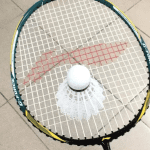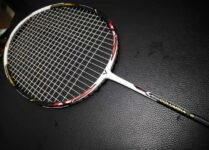
Badminton Racket Victor COLUMBIA 3 Reviews
The staff at the stringing shop I frequent took over the Columbia 3 and specifically asked, “Are there any new Columbia rackets?” “Egghead rackets are rare now.” Indeed, despite Victory releasing new egghead rackets over the past three years, these products, regardless of their performance, neither have the buzz (models like the Columbia 2/3/5/6 are recent releases) nor have they become mainstream (the JetSpeed 60 is notably regrettable).
When I previously tested the Yu 7K, I mistakenly thought Yu was the shortest series in Victory’s lineup. It wasn’t until I tried the Columbia 3 that I realized Columbia is actually the shortest series, so I aim to quickly try them all.

Parameters: 4UG5, full grip (towel grip), total weight 89.5g, balance point 302mm, 6.4mm Babolat carbon shaft, shaft length 210mm, moderate stiffness, egghead box frame, warranty 27 lbs, strung with 25-27 lbs VBS66N.
Compared to the mango yellow of the Columbia 6, the Columbia 3 gives a more traditional impression. Black, gold, red, and white are all popular colors, and the paint and stickers are rather simple and retro, giving me a sense of examining military equipment. However, the design style of the Columbia series is very consistent; comparing the Columbia 6 and Columbia 3 shows almost no difference in patterns.
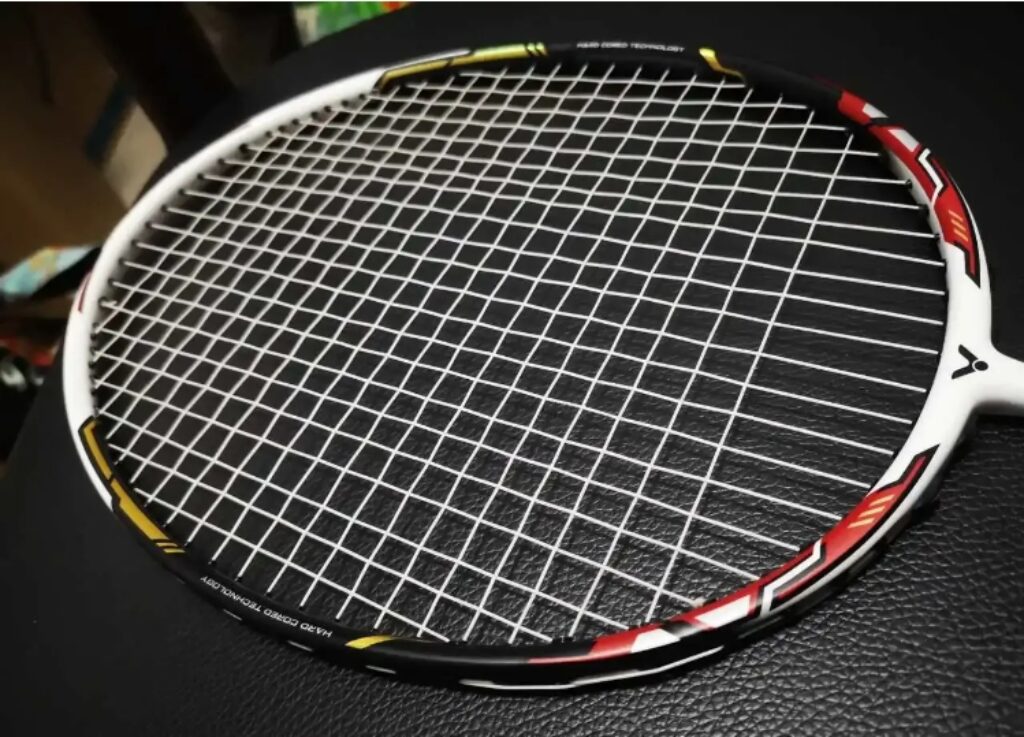
The feel of the Columbia 3 is quite similar to the Columbia 6, with a slightly head-heavy sensation. Although egghead rackets naturally have less wind resistance, the box frame of the Columbia 3 means it has no advantage in swing speed. However, compared to the Columbia 6’s “unstoppable” feeling after the shot, the Columbia 3 is slightly better. During empty swings, I can feel the racket’s overall stiffness is moderate, not as high as the Columbia 6. I would recommend the G5 specification; this model’s grip, possibly due to changes in raw material supply, is thicker and feels slightly bulky even after removing the grip.
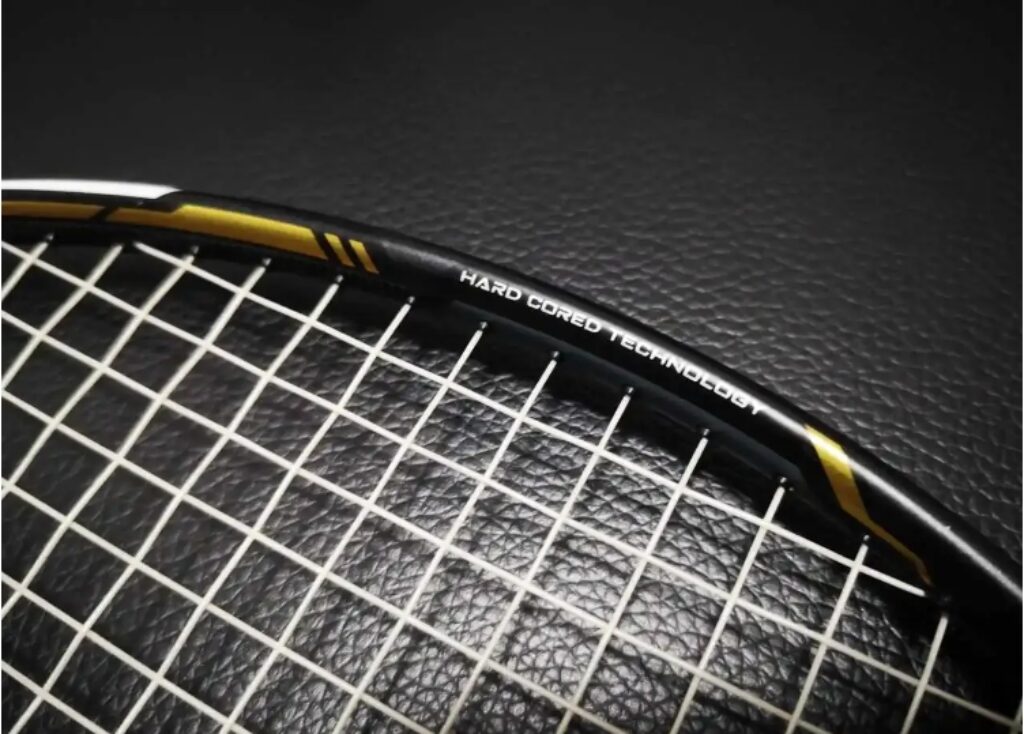
On the day of testing, my insomnia and lack of rest made me doubt my ability to handle this racket. Indeed, during high clears, I found myself struggling. Despite the moderate difficulty in shaft drive, the heavier swing weight and smaller sweet spot often caused me to miss the optimal hitting point or produce less effective returns. Before playing a match, the Columbia 3 felt like previous egghead rackets, not easily understood with just a few tentative shots, indicating a certain learning curve.
During the actual match, I discovered some characteristics of the Columbia 3. Compared to the Columbia 6, its shots lack a bit of crispness and have more holding feel, making me unusually inclined to engage in more net play to create a more active doubles scenario, especially in quick net responses. The feel is quite stable. The strong core filling, a signature technology of Victory, also gives the Columbia 3 good torsional resistance. Columbia series’ luxurious materials ensure excellent directionality and stability.
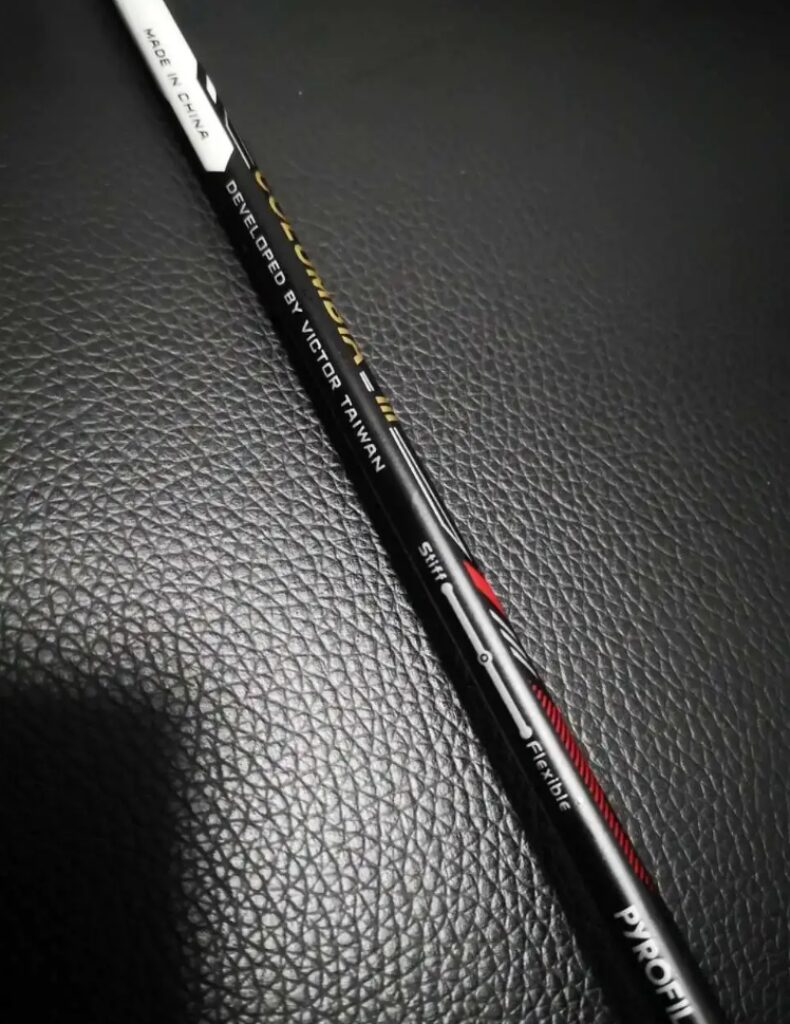
However, for small power shots, the Columbia 3 is slightly inferior to the Columbia 6 in terms of feel. Due to the change in shaft stiffness, the Columbia 3 has a longer time from impact to ball release, resulting in a somewhat “mushy” feedback. This issue makes me less fond of flat drives and blocks, as the ball’s rhythm is slowed by the less crisp rebound and somewhat clumsy swing, making it harder to recover. Even when hitting the sweet spot, the disadvantage in swing speed and small sweet spot reduces tolerance, even in active situations. During the test match, I had an awkward situation where I successfully anticipated the opponent’s shot but failed to react quickly enough due to the racket’s sluggish response, resulting in lost points. This issue also extends to the backhand area and passive lifts.
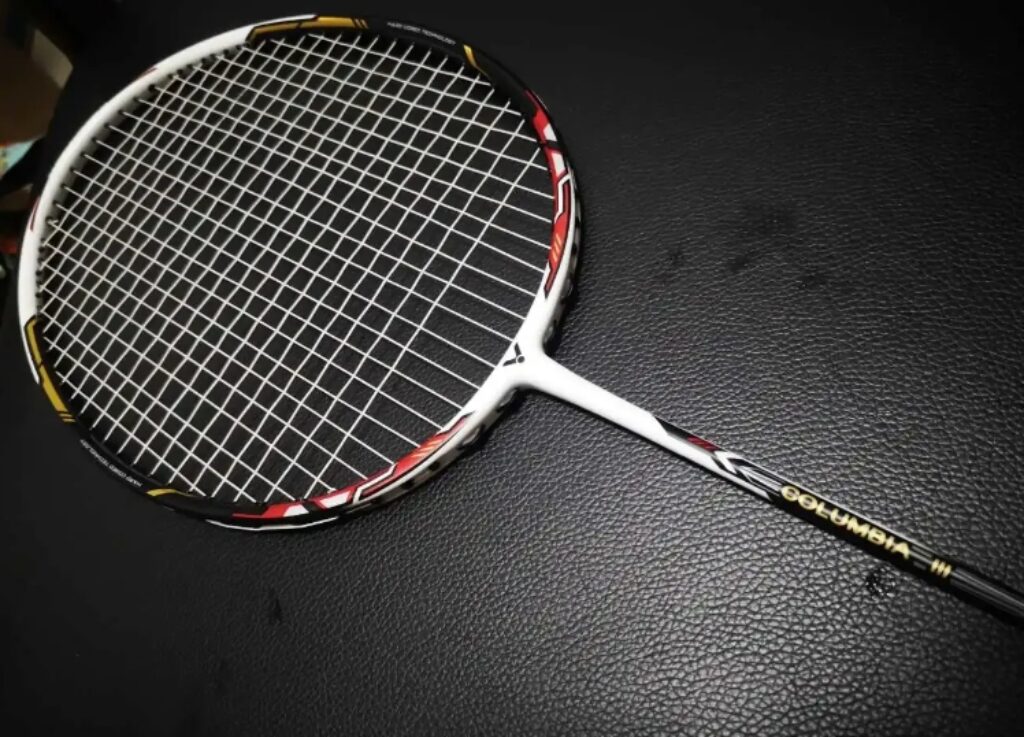
Adapting to the Columbia 3, or finding the right way to use it, becomes crucial. For a brute force player, the answer is straightforward—power, not control. The head-heavy balance, excellent shaft elasticity, and persistent egghead frame make powerful shots exceptionally effective. Each drive and smash has explosive power, meeting the standards of a top offensive racket. The reduction in shaft hardness is a plus for players who lack concentrated power, making the Columbia 3 a better choice for delivering strong offensive performance while allowing for more frequent powerful shots compared to the precision-demanding Columbia 6. Smashes feel like cannon shots, and even if the opponent avoids a direct point, the force of the shot often provides a second attacking opportunity. However, the Columbia 3 does consume a lot of stamina, partly due to the racket’s inherent nature and the aggressive desire for powerful shots driven by the feedback: flat clears, drives, heavy smashes, and covering various court areas. I willingly push myself to the limit.
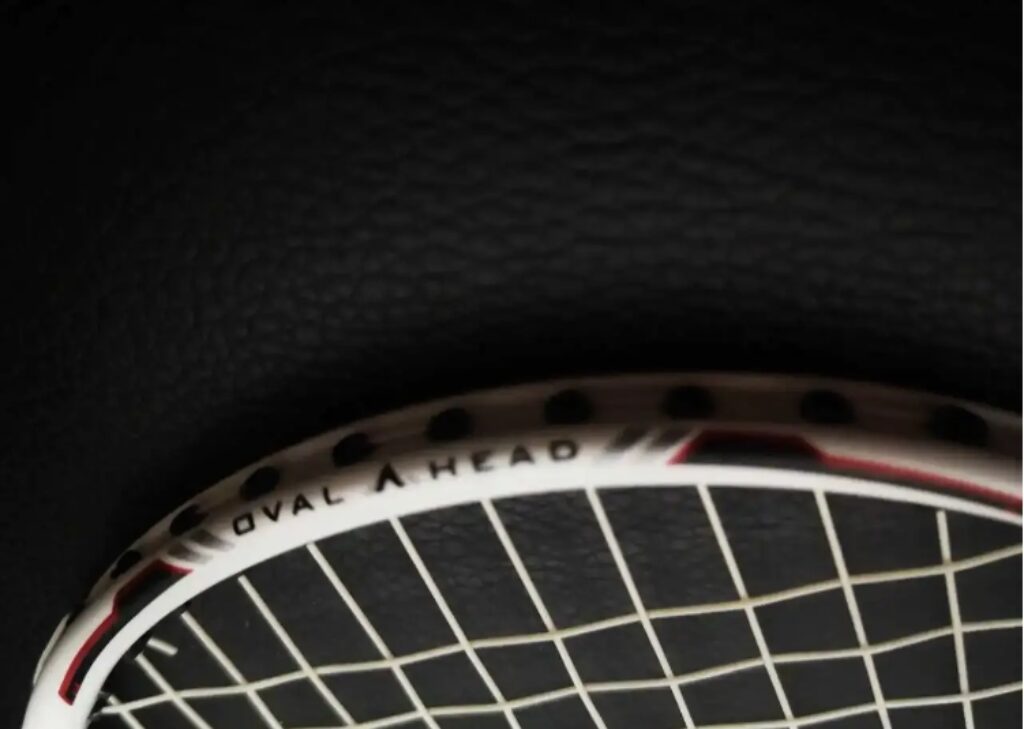
Nevertheless, this is still not a racket that every player can appreciate, and it has a flaw that current adjustments cannot resolve. Although the medium stiffness adjustment improves the whip-like power in single smashes, it also results in a “duangduang” feeling during faster, continuous play due to the shaft’s spring effect, making the frame feel less responsive and capable of only holding its shape. The 6.4mm medium shaft is just adequate for this somewhat heavy frame, not exceptional.
If everyone’s stamina is a milk bottle, and executing each tactical move is like adding stones of varying diameters, then the stones for smashing should be the largest. Sometimes there is still space in the bottle, but it cannot accommodate another heavy smash. The Columbia 3 makes the stone diameter slightly smaller, meaning while each large stone might weigh less, it allows for more stones in the bottle and minimizes wasted space when full. The Columbia 3 may not be easy to handle, but it effectively allowed me to win matches by optimizing my stamina and striving for court control.
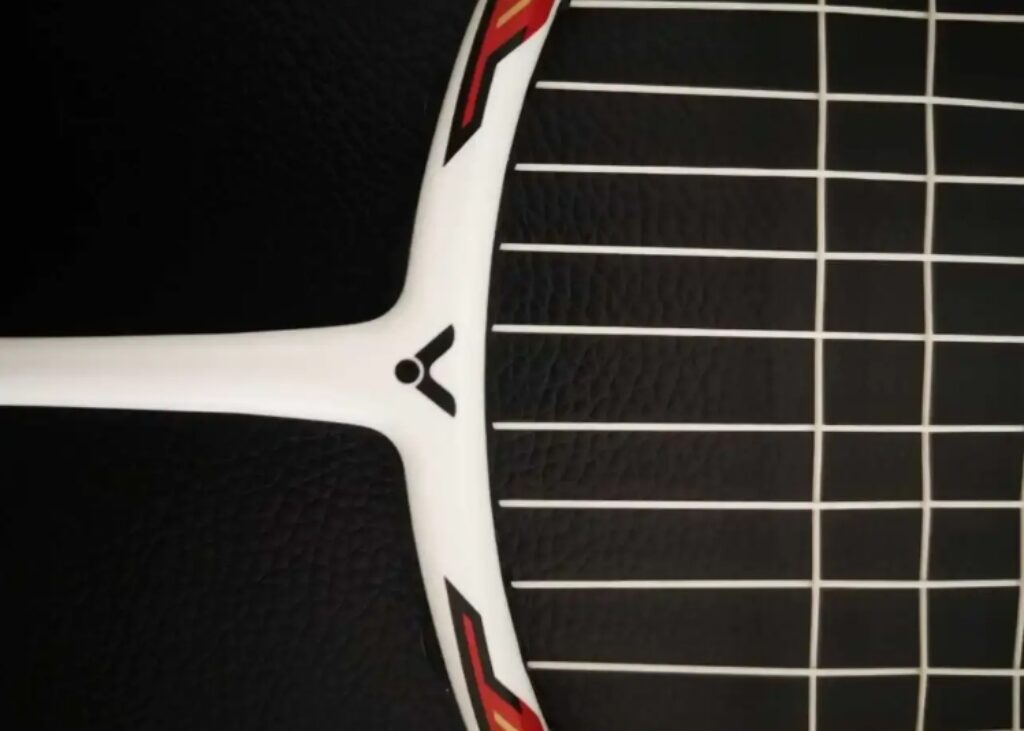
I personally do not understand the emphasis on “retro” in Columbia’s official promotional posters. The egghead design did appear earlier, but this shouldn’t be the reason for its lack of popularity among current players. The promotional approach seems to conform to and reinforce stereotypes. The Columbia 3 remains a product with excellent cost-performance, particularly valuable when paired with a doubles partner willing to assist with ball play. If Victory restricts its audience, it will only lead to lower market performance for its other Columbia models.



